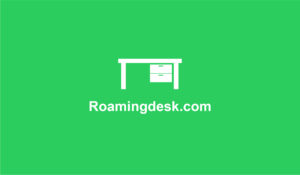Streamlining Appointments: The World of Integrated Scheduling Systems
Imagine a digital maestro that harmonizes your calendar, appointments, and tasks, all in one harmonious platform. This conductor of efficiency is what we call an integrated scheduling system. It’s designed to simplify the often complex dance of managing schedules, whether for a business, organization, or personal use. Let’s delve into the key elements and benefits of this modern marvel:
1. Calendar Mastery: At its core, an integrated scheduler offers a centralized calendar hub. It’s your command center, allowing you to effortlessly view, create, modify, and organize appointments, events, and to-dos. You can smoothly switch between daily, weekly, and monthly views to keep your life on track.
2. Booking Bliss: Say goodbye to scheduling woes. These systems typically allow you to book appointments, meetings, or events with ease. You define the time slots, durations, and even the location, all at your fingertips.
3. Control with Finesse: Different users can have different roles and permissions within the system. Administrators might have all-access passes, while employees may only tinker with their own schedules.
4. Calendar Convergence: Integration is the name of the game. Most integrated schedulers seamlessly sync with popular calendars like Google Calendar, Outlook, and iCal. Your appointments and events stay in perfect harmony across platforms.
5. Gentle Nudges: Forget about missed appointments. These systems send out automated reminders, such as emails or SMS alerts, to keep both you and your clients punctual and on track.
6. Resource Optimization: When juggling resources like meeting rooms or equipment, the system steps in as your resource manager. It helps you allocate and optimize these assets efficiently.
7. Client Chronicles: For businesses, managing client data is a breeze. You can track client details, appointment history, and preferences all within the system.
8. Payment in Sync: Some integrated schedulers go the extra mile, integrating payment processing. Collecting payments or deposits for services at the time of booking becomes a seamless part of the process.
9. Data Insights: These systems often come equipped with reporting and analytics tools. They allow you to dive into appointment data, track performance, and make informed decisions.
10. Tailored to You: Personalization is key. You can customize the scheduler to match your specific needs, from branding to the way you prefer things to be worded.
11. Mobile Magic: Keep your scheduling close, even when you’re on the move. Many systems offer mobile apps or mobile-friendly web interfaces, so you can manage appointments anytime, anywhere.
12. Connect and Expand: Integration doesn’t stop at calendars. These systems often provide APIs, opening the door to seamless connections with other software, like CRM systems or marketing tools.
13. Ready to Grow: As your needs expand, your scheduler should grow with you. Scalability ensures it remains effective, even as your appointment volume or user base expands.
14. Safety First: Given the sensitive nature of scheduling data, robust security measures are in place to safeguard your information and ensure privacy.
Integrated scheduling systems find homes in various sectors, from healthcare and professional services to education and hospitality. They’re the conductors orchestrating efficient operations, enhancing customer experiences, and ensuring that the symphony of appointments plays harmoniously for individuals and organizations alike.
Looking for remote work then visit Roamingdesk.com

